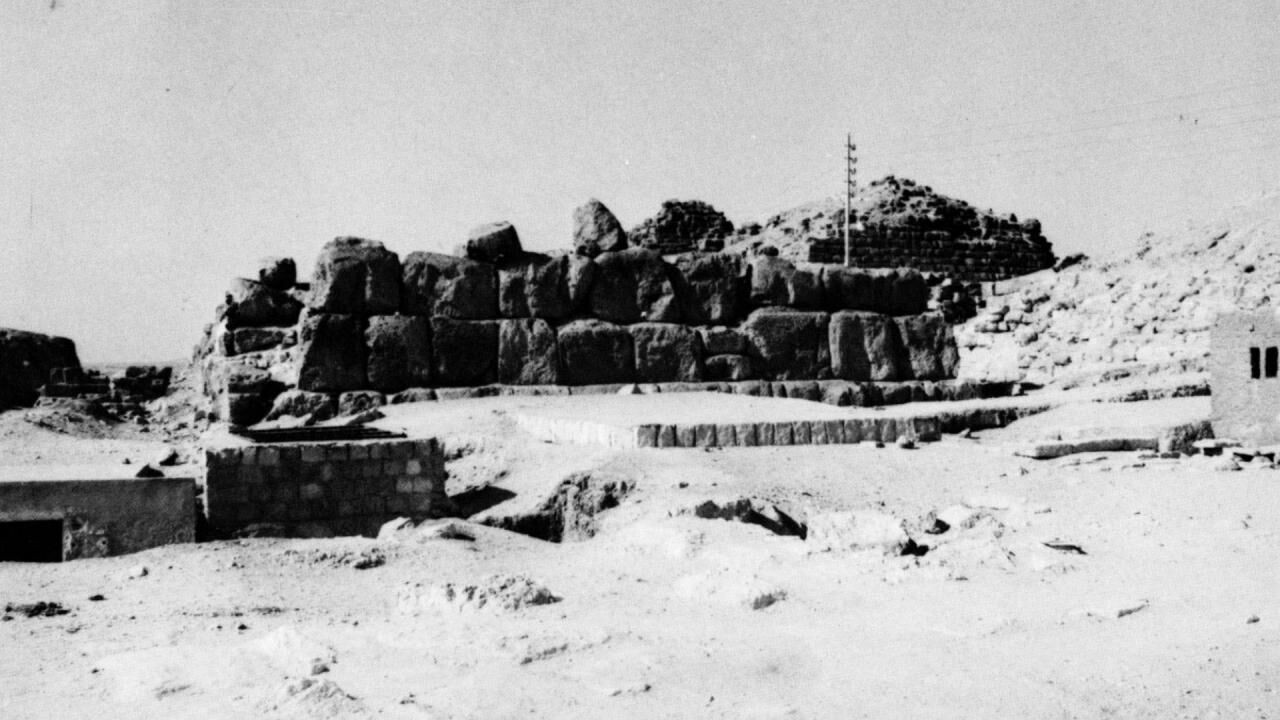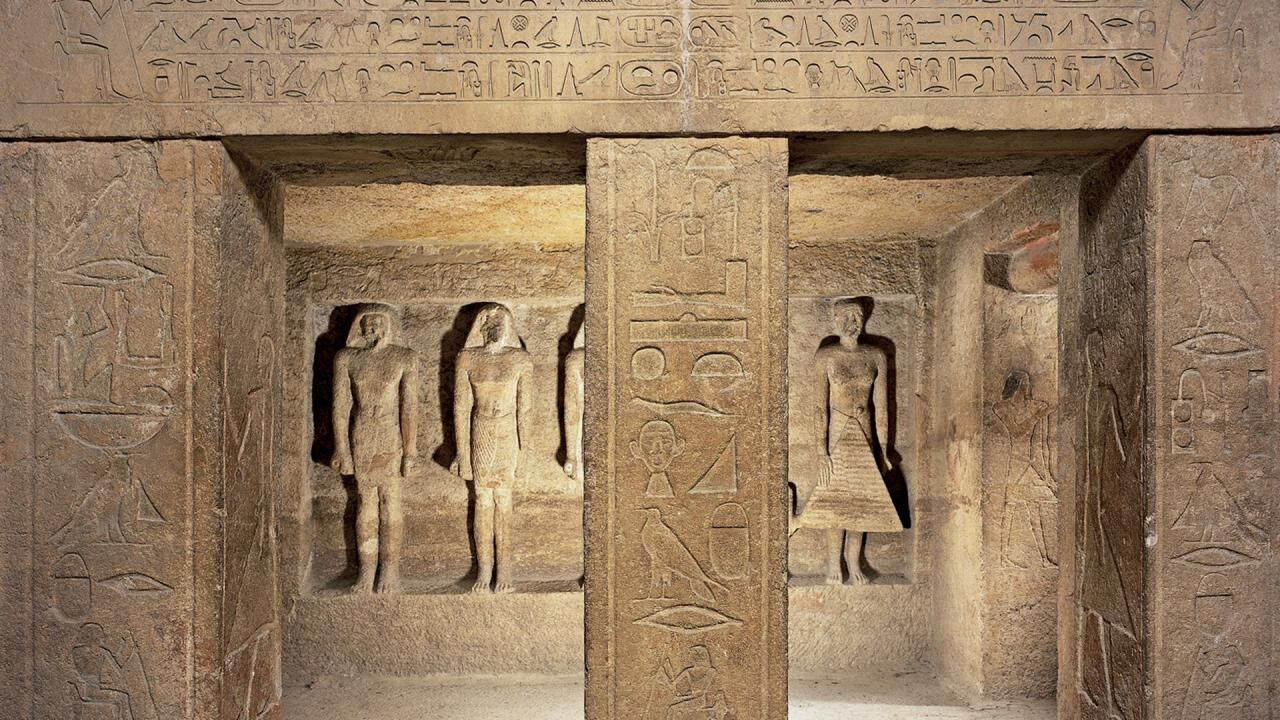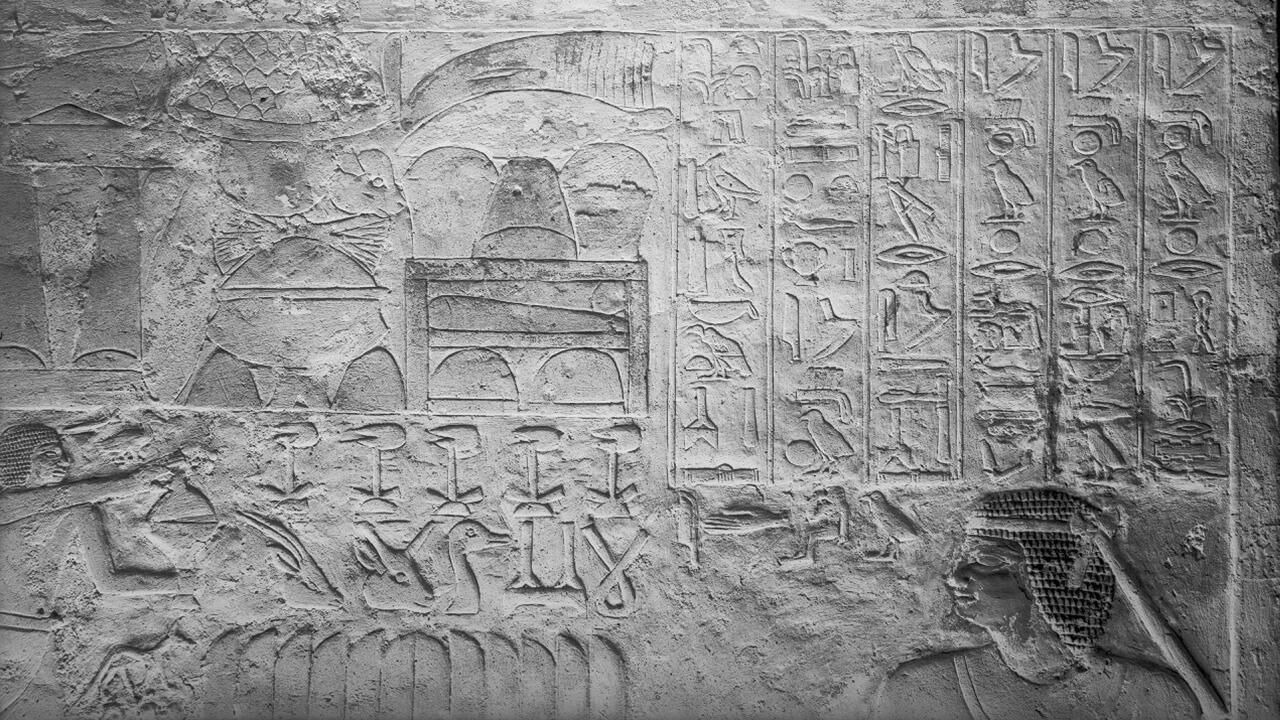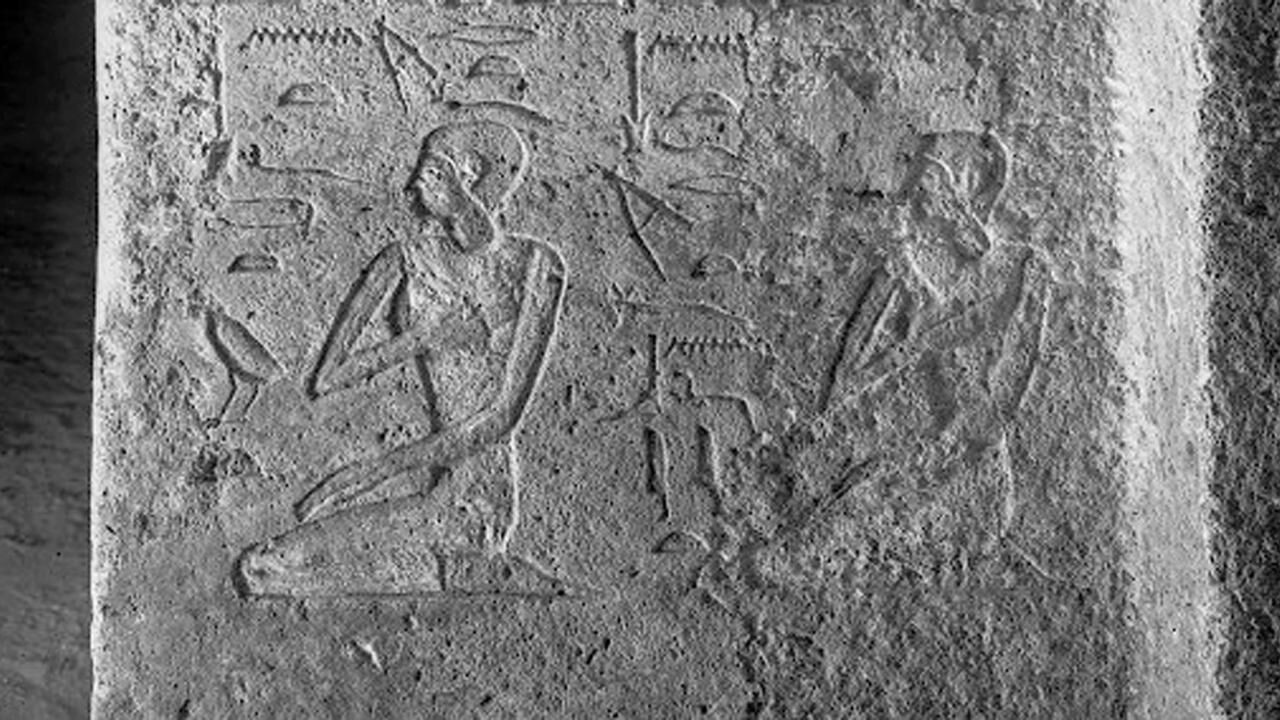
The tomb of Idu lies in cemetery G 7000 north of street 7000 and east of the related tomb of Qar (G 7101). It was discovered by the Harvard University-Museum of Fine Arts, Boston Expedition on January 10, 1925, in the course of clearing the shafts east of the complex of Qar. The shaft with the burial chamber and sarcophagus of Idu (G 7102 C) was cleared during the first two weeks of 1925.

The background for the digitally updated drawing sample was created photogrammetrically using three different datasets: a series of photos taken for a virtual tour of the Qar & Idu Mastabas by Luke Hollis; a more recent set taken to provide the level of detail required for drawing the facade at a scale of 1-4@300ppi by Marleen De Meyer; as well as a set of five 6.5”x8.5” archival glass plate negatives taken by Mohammedani Ibrahim between 1925-1940.

"Lorem ipsum dolor sit amet, consectetur adipiscing elit, sed do eiusmod tempor incididunt ut labore et dolore magna aliqua. Ut enim ad minim veniam, quis nostrud exercitation ullamco laboris nisi ut aliquip ex ea commodo consequat. Duis aute irure dolor in reprehenderit in voluptate velit esse cillum dolore eu fugiat nulla pariatur. Excepteur sint occaecat cupidatat non proident, sunt in culpa qui officia deserunt mollit anim id est laborum."

Simpson’s original publication of the texts found in the tombs of Qar and Idu was quite good, so when we began discussing how and what to update for the digital version, there was a consensus that the changes needed to be made more cosmetic than structural. We also immediately realized that a complete update of all the inscriptions would not be feasible within our time frame, so we opted to do a test case using the architrave of Idu. At the same time, the rest remains in Simpson’s original format for now.

The architrave consists of two large blocks joining precisely over the center of the door and a standing figure of Idu at the right facing left. He holds a long staff and wears a short pointed skirt painted yellow, a broad collar and wristlet, and a tight fitting wig. Above these fitting blocks is an overhang with sloping element, also of two blocks, and above these blocks two additional fitting blocks, with the two lines of text arranged so that the first reads from right to left and continues the text in the second line from left to right

The access doorway is 0.60 m. wide and 0.70 m. deep, 1.58 m. high outside, 1.46 m. high inside, with drum between. The sill is .22 m. above the floor of the chamber and .05 m. above that of the exterior court. On both east and west jambs are standing figures of Idu, facing north, with inscriptions above and in front of them.

The north wall presents a thematic unity and has been frequently discussed and illustrated. There are a number of scenes taking place before the deceased, who is seated on a palanquin. These scenes include the preparation of food and drink, music with dancers, persons bringing offerings and children playing games. A selection has evidently been made from the various episodes, as the parallels from other tombs indicate. Perhaps the best order is achieved by reading the right wall, bottom to top, the left wall, bottom to top, and last the tympanum.

Rock-cut throughout. Length 4.22 m. Along the entire length of the wall, at the top, runs a single-line inscription reading from right to left. Below this, in deep niches, are six standing statues (1 to 6), the northernmost smaller than the others, the space above it being occupied by a four-line inscription reading right to left. Between the niches containing statues (2) to (6) the surface of the wall is inscribed with four vertical inscriptions.

Length 1.30 m. Scenes and inscriptions covering the full length of the wall, complete in upper part: lower part partly scaled off and missing. Idu views the singing, music making, and games in honor of the goddess Hathor.

Length ca. 1.50 m. At the north, Idu is seated facing left on a chair before a table of bread. Under the chair sits his wife facing left. Over and beyond the table of bread are three registers of offerings and offering-bearers, extending to the south end of the wall. Below this is a narrow band of inscription reading right to left running the full length of the area. At the bottom of the area is another register, with a short vertical text at right, and a procession of butchers, etc., facing right running the length of the wall.

A large stela painted to imitate red granite under a cavetto cornice, framed in a torus molding, with below a rock-cut half-length engaged statue of Idu, the hands extended forward, palm up, to receive the offerings on the offering table lying on the floor below.

The wall surface is occupied by a seated figure of Idu facing right before an offering table, a text along the top of the wall reading from left to right, a large offering list opposite Idu, and piles of offerings below the list. In addition, there is a register of offering bearers facing left toward Idu below this scene and a horizontal line of text above the bearers. Subsequent to the carving of the wall surface a narrow stela was cut in the northern part of the wall through the pile of offerings, the horizontal line of text, and the procession of bearers.

Seven shafts are provided with 7102 designations. Of these A-E lie between 7101 and 7102 but within the presumed area of 7102. 7102 C is the main burial with the sarcophagus of Idu. 7102 A and B are later but probably of the same family, although they lie beneath the presumed line of the west wall of the superstructure mastaba. 7102 D and E are subsidiary to 7102 C, and hence part of the complex. 7102 F is outlying to the northwest and clearly intrusive. 7102 G in the north wall of the middle level court is assumed to belong to a member of the family.

Containing faience vessels, small fragments of relief, faience vessels, amulets, bowls, jars, copper tools, pottery, flints, and fragments of an alabaster royal statue etc.

In life, Idu was the Scribe of the Royal Documents in the presence of the king. He also held the title, "Tenant of the Pyramid of Pepi I" as well as "Inspector of the wab-priests of the Pyramids of Khufu and Khafre (Pyramid), during the reign of Pepi I. His wife was called Meretyotes, he had three sons: Qar, Idu, and Hemi. He also had two daughters, called Bendjet and Iry.